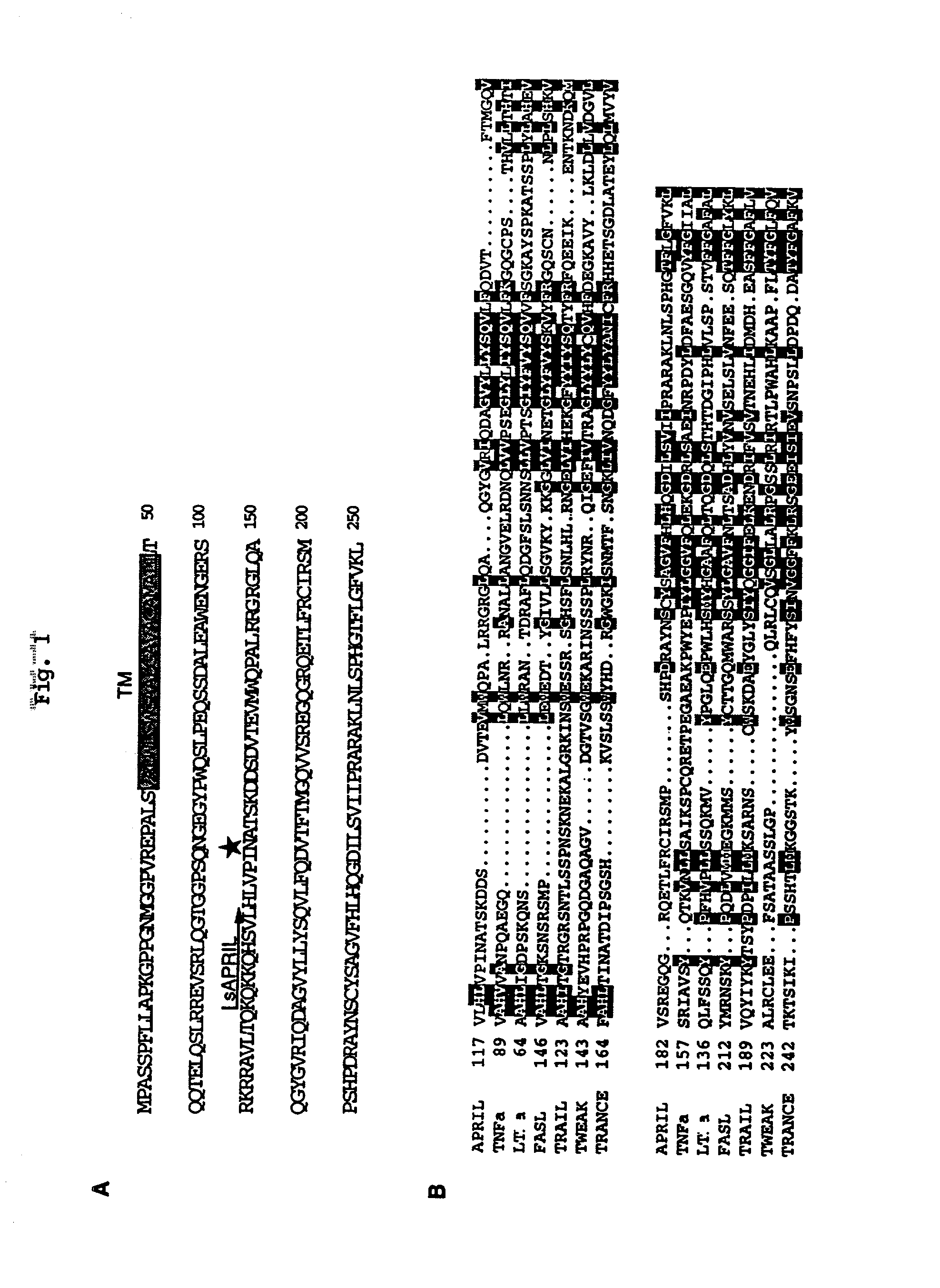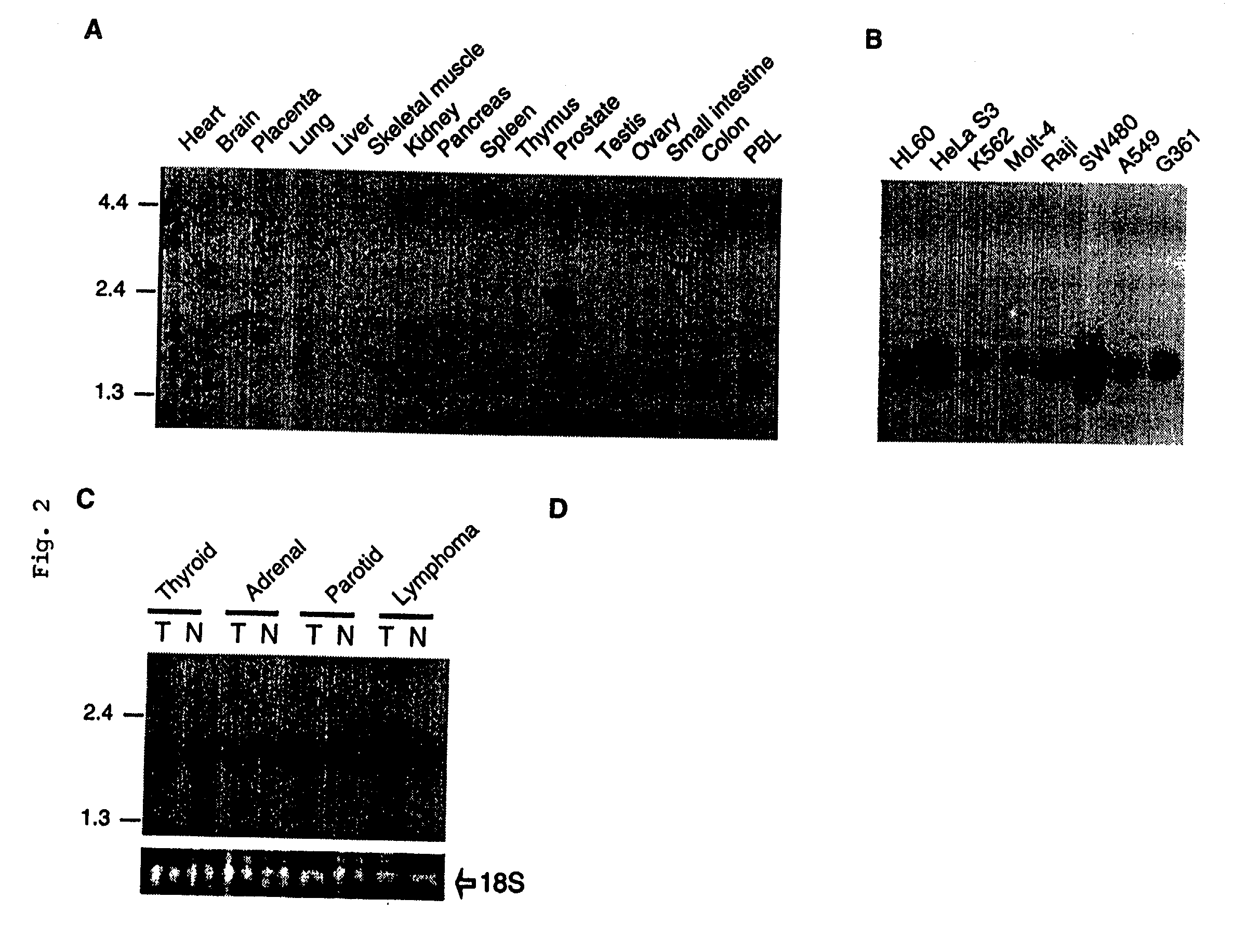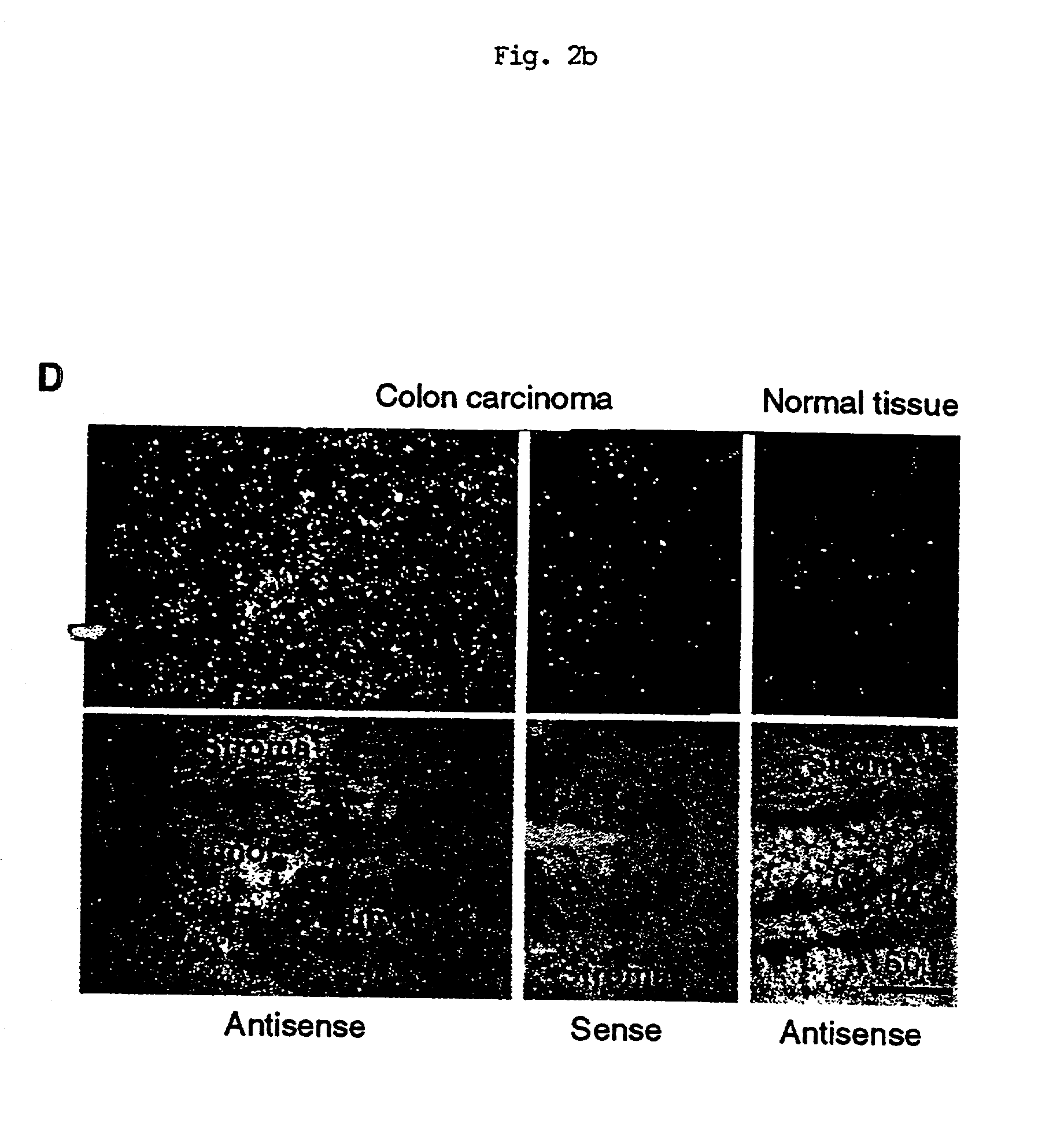APRIL- a novel protein with growth effects
a growth effect and protein technology, applied in the field of new proteins with growth effects, can solve the problems of inability to efficiently deliver a death signal, inability to completely satisfy cancer treatment, and limitation of cell contact ability to induce cell death, so as to reduce the observed immunogenic response and minimize the use
- Summary
- Abstract
- Description
- Claims
- Application Information
AI Technical Summary
Benefits of technology
Problems solved by technology
Method used
Image
Examples
example 1
[0117] Northern blot analysis of APRIL revealed that the expression of APRIL was weak and restricted only to a few tissues (FIG. 2A). Two transcripts of 2.1 kb and 2.4 kb were found in the prostate, whereas PBLs revealed a shorter transcript of 1.8 kb. Northern blot analysis was performed by using Human Multiple Tissue Northern Blots I and II (Clontech #7760-1 and #7759-1), Human Cancer Cell Line MTN Blot (Clontech #7757-1) and Human Tumor Panel Blot V (Invitrogen D3500-01). The membranes were incubated in ExpressHyb hybridization solution (Clontech #8015-1) for at least 1 hour at 62.degree. C. The random-primed cDNA probe (Boehringer Mannheim) was synthesized using cDNA corresponding to the extracellular domain of APRIL as template. The heat-denatured cDNA probe was added at 1.5.times.10.sup.6 cpm / ml in fresh ExpressHyb. The membrane was hybridized 12-24 hr at 62.degree. C., washed three times in 2.times.SSC containing 0.05% SDS and exposed at -70.degree. C. Northern blot analysis ...
example 2
[0121] The widespread expression of APRIL in tumor cells and tissues suggested to us that APRIL may be associated with tumor growth, and we therefore incubated various tumor cell lines with purified recombinant Flag-tagged sAPRIL (10).
[0122] Human embryonic 293T cells, human leukemia Jurkat T-cells, human Burkitt lymphoma B-cells Raji and melanoma cell lines were grown as previously described (16, 17). Other cell lines referred in this paper are deposited in and described by the American Type Culture Collection (Rockville, Maryland). All cell lines were cultured in RPMI or DMEM medium supplemented with 10% fetal calf serum.
[0123] Flag-tagged versions of the extracellular domain (residues 103-28 1) of human FasL and TRAIL (residues 95-281) were recently described (15). Flag-tagged soluble human TWEAK (residues 141-284) was produced in 293 cells (P. S. manuscript in preparation). The anti-Flag antibody M2 were obtained from Kodak International Biotechnologies. An increase in prolifera...
example 3
[0127] Isolation of a receptor binding to APRIL.
[0128] Ligands of the TNF family can be used to identify and clone receptors. With the described APRIL sequences, one could fuse the 5' end of the extracellular domain of APRIL which constitutes the receptor binding sequence to a marker or tagging sequence and then add a leader sequence that will force secretion of APRIL in any of a number of expression systems. One example of this technology is described by Browning et al., (1996) (JBC 271, 8618-8626) where the LT-.beta. ligand was secreted in such a form. The VCAM leader sequence was coupled to a short myc peptide tag followed by the extracellular domain of the LT-.beta.. The VCAM sequence is used to force secretion of the normally membrane bound LT-.beta. molecule. The secreted protein retains a myc tag on the N-terminus which does not impair the ability to bind to a receptor. Such a secreted protein can be expressed in either transiently transfected Cos cells or a similar system, e...
PUM
| Property | Measurement | Unit |
|---|---|---|
| nucleic acid | aaaaa | aaaaa |
| soluble | aaaaa | aaaaa |
| hydrophilic | aaaaa | aaaaa |
Abstract
Description
Claims
Application Information
 Login to View More
Login to View More - R&D
- Intellectual Property
- Life Sciences
- Materials
- Tech Scout
- Unparalleled Data Quality
- Higher Quality Content
- 60% Fewer Hallucinations
Browse by: Latest US Patents, China's latest patents, Technical Efficacy Thesaurus, Application Domain, Technology Topic, Popular Technical Reports.
© 2025 PatSnap. All rights reserved.Legal|Privacy policy|Modern Slavery Act Transparency Statement|Sitemap|About US| Contact US: help@patsnap.com



